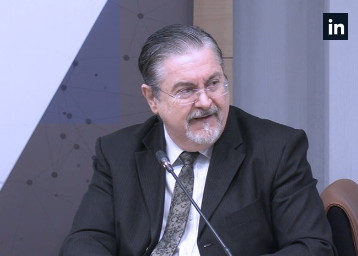Blog
30 de October de 2024
Contracts as Processes in the Digital Age: Beyond Smart Contracts
In the digital age, the conception of contracts as mere written agreements is being superseded by a more advanced view that understands them as orchestrators of processes. This perspective, defended by the thesis put forward by CODEX (Stanford Law School) on computable contracts, stresses that contracts not only establish the framework and rules of the contractual relationship, but also direct the entire process of that relationship. The life cycle of a contract, ranging from negotiation, signature, and execution, to termination based on the fulfilment of its objectives, is aligned with the phases of the contractual relationship, providing a comprehensive and computable structure in which ‘the contract is an automaton managing the states of the contractual process’ as the CODEX initiative describes.
Computable Contracts: Orchestrators of the Contractual Process
Considering a contract as an orchestrator of processes takes a much broader and deeper view than that offered by Smart Contracts. The latter, popularised with blockchain technology, focus on the automatic execution of predefined agreements, but are far from capturing the complexity and flexibility of computable contracts. Computable contracts, on the other hand, manage and coordinate each phase of the contractual process, adapting dynamically according to whether or not the contractual goals are met.
An illustrative example is buying and selling on Amazon. This contractual process ranges from the selection of the product, through the digital signature upon clicking ‘buy’, to the execution of the contract with the delivery of the product, and its termination, which could include the return of the item if it does not meet the buyer's expectations. This example shows how contracts in the digital age are not only signed and executed, but also ‘compiled’, i.e. digitally deployed over a complex contractual infrastructure. However, it is crucial to distinguish that this is a ‘closed’ trust framework, where Amazon users accept the specific rules and mechanisms of the platform.
EIDAS 2: Facilitating Open Contractual Processes
In the face of these closed environments, the EIDAS 2 regulation is positioned as an essential pillar for enabling contract processes in ‘open environments’. Designed in the context of a more connected European digital society, EIDAS 2 provides digital trust services that enable the creation and management of computable contracts in an open and secure ecosystem. This is essential for contracts to orchestrate complex processes in an environment where contracting parties are not limited to a single platform, but interact in a regulated and recognised European-wide framework.
An Expanding Contractual Infrastructure
In today's digital economy, contracts are evolving not only in number and types, but also in their ability to be deployed as adaptive and dynamic processes. Thanks to regulatory frameworks such as EIDAS 2, each phase of a contract's lifecycle can be securely managed in an open environment, allowing computable contracts to orchestrate complex contractual processes with greater efficiency and flexibility.
Not to be confused with Smart-Contracts, computable contracts are contracts. The computable contracts thesis redefines the role of contracts in the digital age, proposing them not only as agreements, but as orchestrators of complete processes that evolve throughout the lifecycle of the contractual relationship. This approach, facilitated by regulatory frameworks such as EIDAS 2, highlights the importance of building a contractual infrastructure that supports open and secure processes, clearly distinguishing it from the noise surrounding Smart Contracts. In an increasingly connected world, the ability of computable contracts to manage and adapt contractual processes represents a significant step towards a truly integrated digital economy.
Computable Contracts: The Future is Already Here
The era of computable contracts has already begun. As the lifecycle of contracts becomes digitised, such as in e-commerce, where a sale and purchase is a ‘computable’ process, we are seeing these contractual processes being deployed on execution platforms. This leads us to talk about ‘contractual-plataformisation’, where part of the process is automated following the thesis of computable contracts.
In this context, a computable contract allows an expected event to automatically change the status of the contract. For example, in a loan contract managed on a platform, the payment of the periodic instalment will keep the contract in a ‘state’ of fulfilment. On the other hand, non-payment will be an ‘event’ that will lead to a ‘state’ of default, automatically triggering actions such as a demand for payment.
The integration of these capabilities into digital platforms not only facilitates the execution of contracts, but also reinforces the idea that computable contracts are transforming the way we understand and manage contractual relationships in the digital age.
The chart provides a visual representation of the evolution and complexity of contracts in the digital age, from self-executing clauses to the full digitisation of the contractual lifecycle, all within a legal framework that supports these processes.
Smart clauses
At the core of the chart, we find the self-executing clauses, commonly known as ‘Smart Clauses’. These clauses represent the most basic form of automation within a contract. Examples such as ‘Delivery versus Payment’ (DvP), ‘Payment versus Shipping’ (PvS), and ‘Delivery versus Delivery’ (DvD), illustrate how certain actions are automatically triggered when specific conditions are met. While a significant development, these clauses represent only a limited part of the full potential of contracts in the digital domain.
Contract Automation
The next level of the graphic expands this concept to the automation of the entire contract, where the contract acts as an ‘automaton’. Here, not only individual clauses are automatically executed, but the entire contractual process can be automated. This implies that the contract can adapt and react to events throughout its life cycle, as in the case of a loan contract that changes its status depending on the fulfilment or non-fulfilment of payments.
Digitisation of the Contract Lifecycle
The outermost level of the graph covers the complete digitisation of the contract lifecycle and the idea of a platform for the contractual relationship. In this context, ‘contractual-plataformisation’ allows contracts not only to be automated, but also to be fully digitally managed, from creation to completion. This approach ensures that all aspects of the contract are interconnected and accessible on a digital platform that supports the entire contractual relationship.
Legal framework
All of this is contained within a legal framework that ensures that these digital innovations remain valid and legally enforceable. The evolution towards computable contracts and their deployment on platforms requires a robust legal environment that ensures the integrity and security of these processes.
Sobre EAD TRUST
EAD TRUST es un prestador de servicios cualificados de confianza electrónica registrado en el Ministerio de Asuntos Económicos y Transformación Digital. Su misión es impulsar la sociedad del futuro con ideas, productos y servicios capaces de dar respuesta técnica a las necesidades jurídicas.
Suscríbete:
Buscador en el blog
Descubre blog de los Inza
Accede a contenidos especiales de actualidad digital presentados por Julián Inza, presidente de EAD TRUST y especialista eIDAS2, eFirma, eAdministración, eJusticia, Blockchain e Identidad digital.




